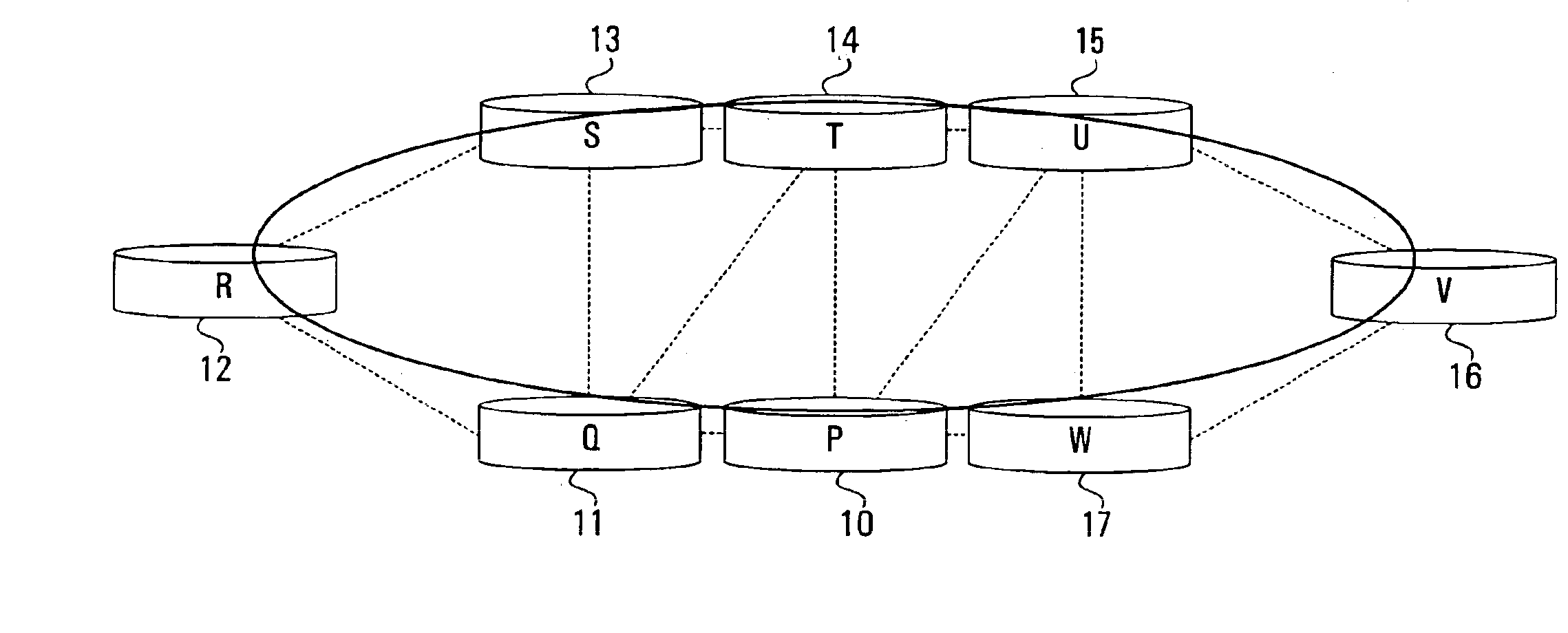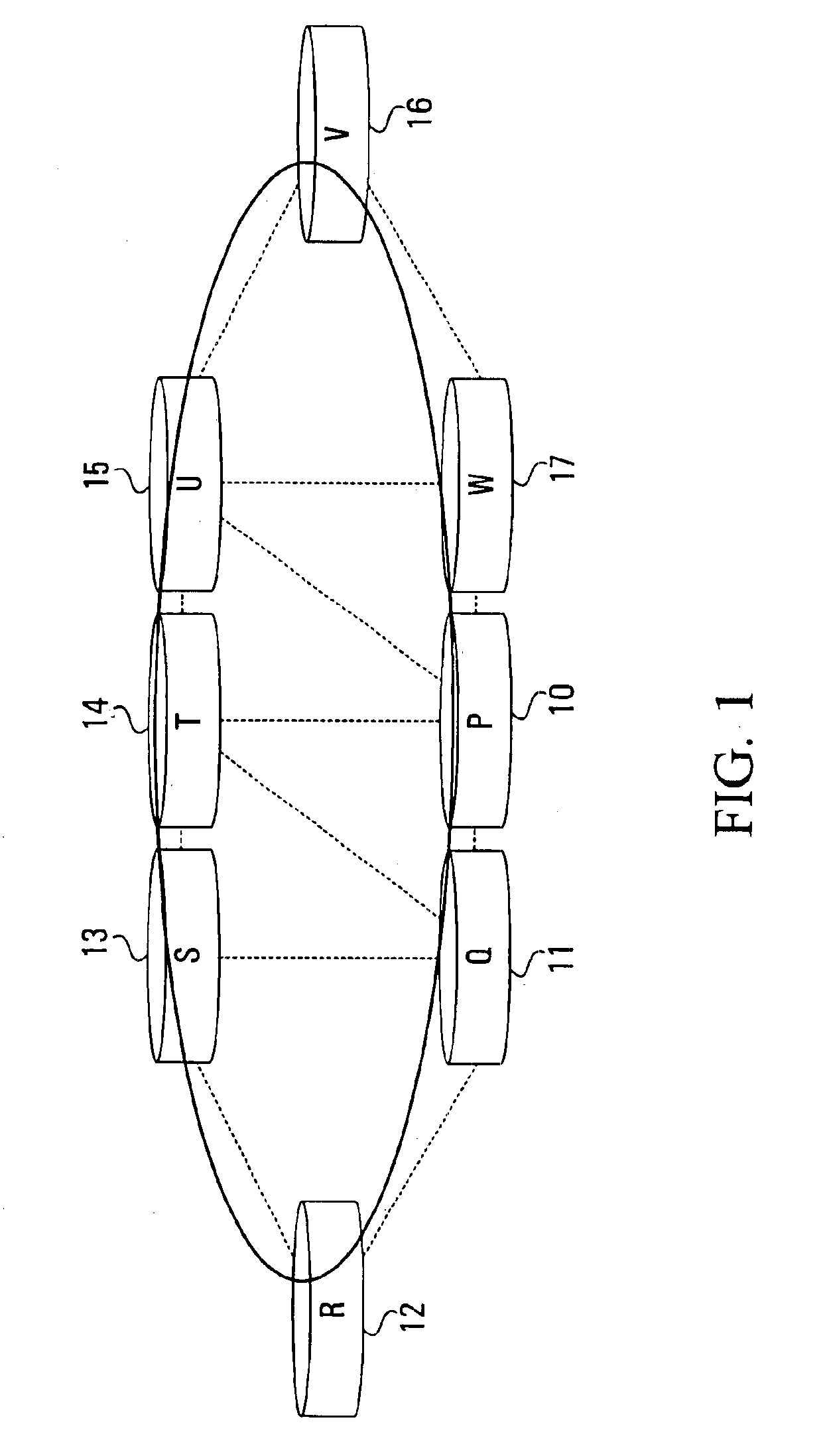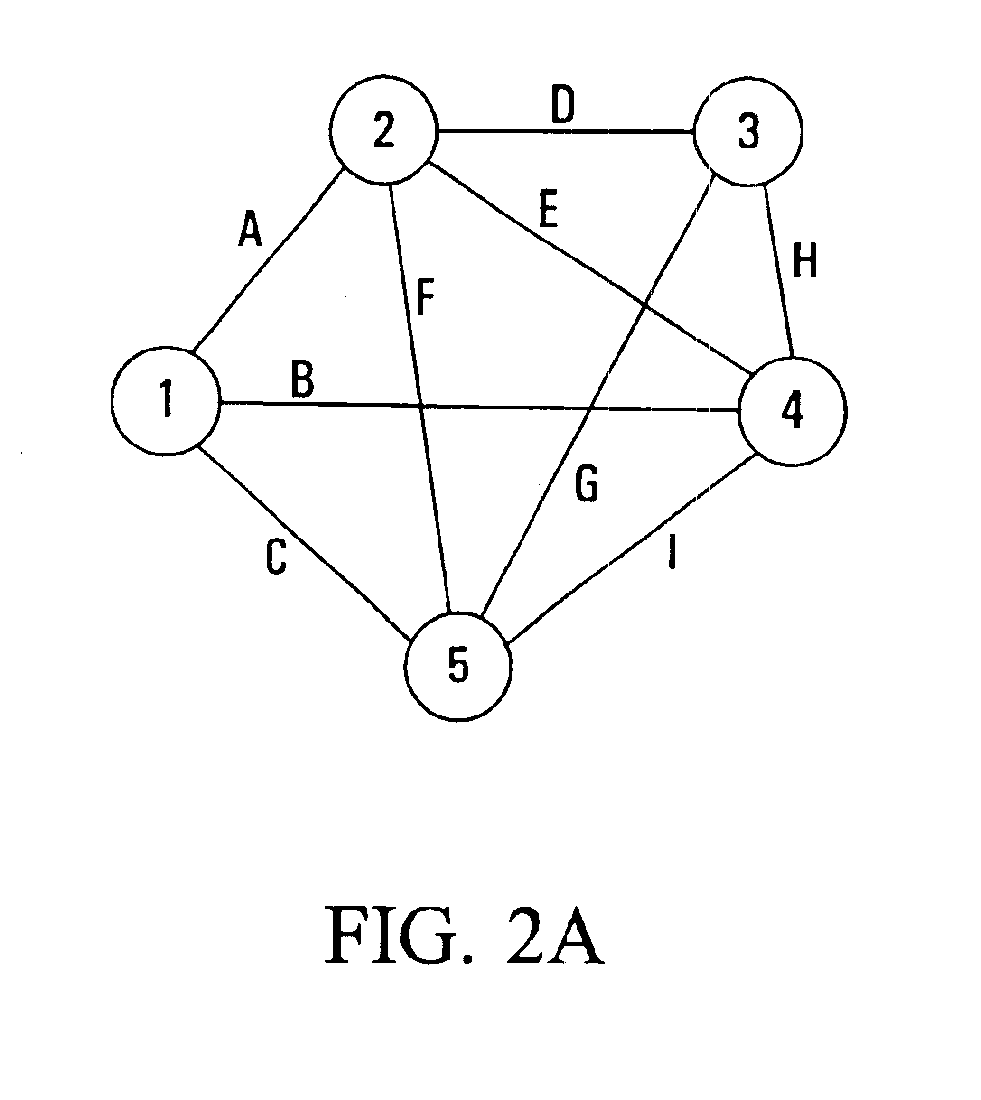Link-level protection of traffic in a packet-switched network
a packet-switched network and traffic protection technology, applied in the field of computer networks, can solve the problems of packets experiencing a long delay, packets taking a long time to converge, and traffic considerations within the network are not taken into account, so as to reduce the variability of delay and accelerate the automatic protection of traffi
- Summary
- Abstract
- Description
- Claims
- Application Information
AI Technical Summary
Benefits of technology
Problems solved by technology
Method used
Image
Examples
Embodiment Construction
[0044]One embodiment of the present invention uses Multi-Protocol Label Switching (MPLS) with explicit routing to establish an MPLS layer protection cycle (p-cycle) that provides automatic protection switching to reroute data packets in the event of a network link failure. Another embodiment of the invention establishes an IP-layer p-cycle through the use of tunneling of Internet Protocol (IP) datagrams with static routing.
[0045]In the MPLS embodiment, an MPLS Label Switched Path (LSP) tunnel passes through the end points of the link that will be protected. In the IP embodiment, an IP-in-IP tunnel passes through the end points of the link that will be protected. The tunnel established in either case way forms a p-cycle through which failed-link packets are directed.
[0046]A given p-cycle may protect one or multiple links. In either case, the p-cycle may be configured by hand, or automatically established using network link state and topology information derived from a routing algorit...
PUM
 Login to View More
Login to View More Abstract
Description
Claims
Application Information
 Login to View More
Login to View More - R&D
- Intellectual Property
- Life Sciences
- Materials
- Tech Scout
- Unparalleled Data Quality
- Higher Quality Content
- 60% Fewer Hallucinations
Browse by: Latest US Patents, China's latest patents, Technical Efficacy Thesaurus, Application Domain, Technology Topic, Popular Technical Reports.
© 2025 PatSnap. All rights reserved.Legal|Privacy policy|Modern Slavery Act Transparency Statement|Sitemap|About US| Contact US: help@patsnap.com



